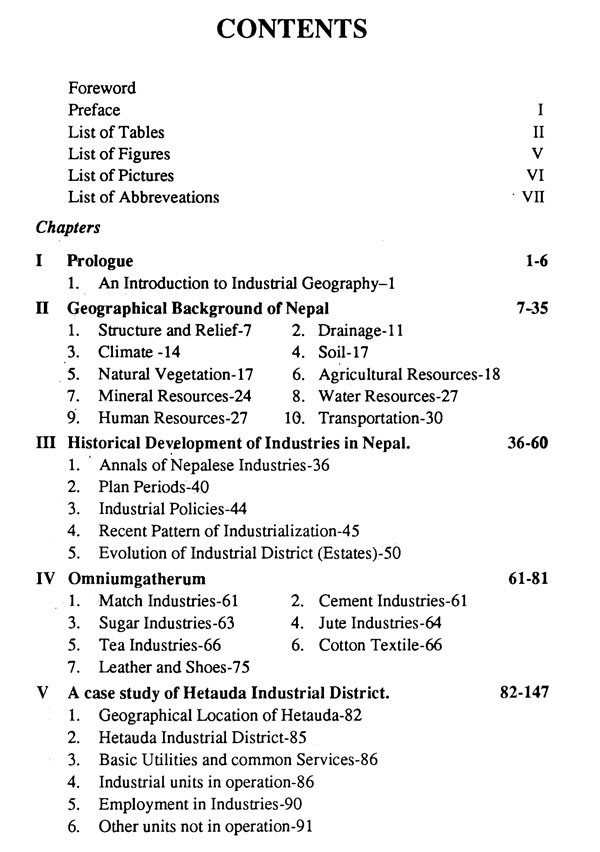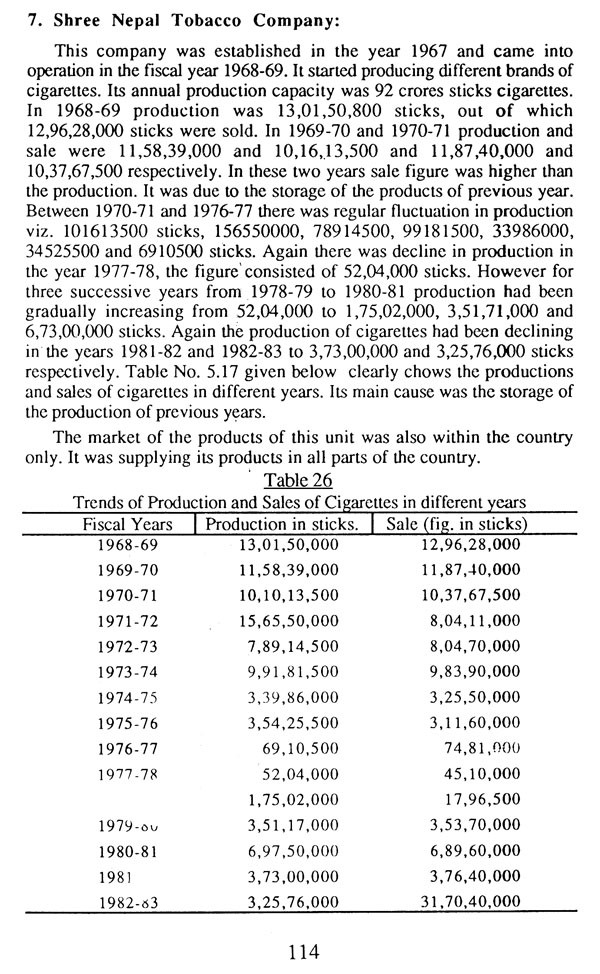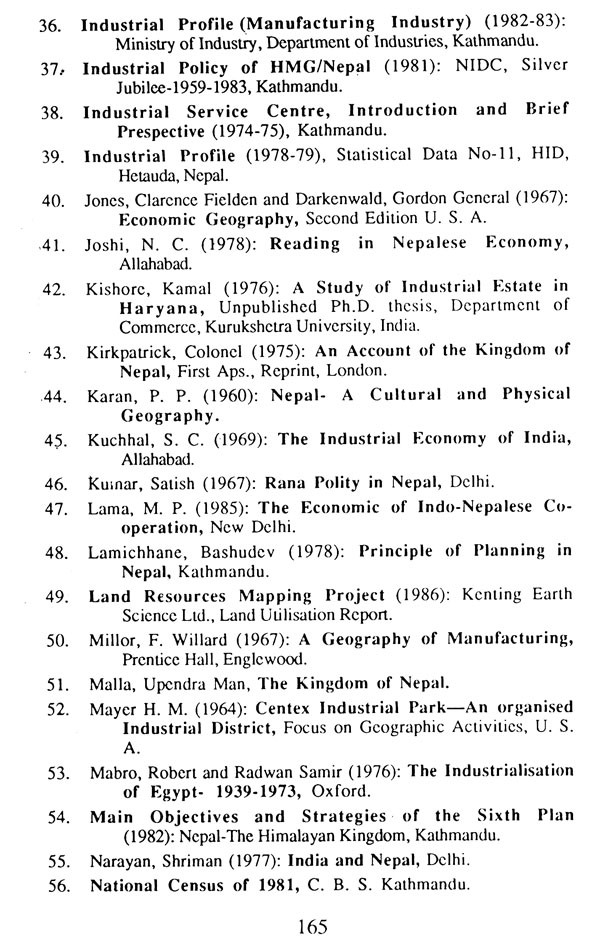
Industrial Geography of Nepal
Book Specification
| Item Code: | UAR981 |
| Author: | Bhagawati Upadhyaya |
| Publisher: | Ratna Pustak Bhandar, Nepal |
| Language: | English |
| Edition: | 1994 |
| Pages: | 186 |
| Cover: | PAPERBACK |
| Other Details | 8.50 X 5.50 inch |
| Weight | 210 gm |
Book Description
Dr. (Mrs.) Upadhyaya is Associate Professor in Padma Kanya Campus Bagbazar, Tribhuvan University. She has also worked as a Chairperson in the Geography Department of the same Campus. She has attended many National and International Seminars organised within the country. Recently, she has successfully completed training on "Environmental Management" managed by Ceda, T. U., Dalhousie University, Canada and UNDP/ HMG, Token Program. She is an active member of Intellectual Women's Group of Nepal and also a member of editorial Board of the Journal Prayas". She has many articles published in Prayas and Patna University Geographical Journal, Patna.
The Present book, Industrial Geography of Nepal,' highlights Locational or geographical factors essential for the prosperity of any Industry of Industrial District. The authoress has elaborately discussed some of the common problems faced by Nepalese Industries and its remedies to solve. This book is the first of its kind in Nepal and useful for planners, Industrialist, Administrator, General Reader, Researchers and Students of all levels.
Due to lack of time and limitation of the area of study obviously, the carpet industry, with regard to work places created and the hard currency carnings for the country the most important industry in Nepal, has been omitted.
It is hoped that in a new edition the carpet industry will be included. A further sugestion is made, namely to give data on the average cost of work places and the source of funds invested in the industry concerned (from aid agencies, government and private) and how much of the invested money goes back to the doner.
Geography and Earth Sciences have so far been partly neglected in development, although they might play an important role. It would help those fields of sciences if they embark on more development related relations.
The present book might well serve as a basis for new tasks.
Indeed, Nepal faces many problems in the process of industrialisation. In the absence of proper assessment of environment many industries suffer, losses and some industries even fail. The catastrophe of these industries could be checked by providing suitable geographical conditions.
Many attempts have been made by the scholars to identify the problems faced by Nepalese industries in the past. But uptil now geographical factors have not received due consideration while planning the site for enterprises. In the book entitled "Industrialisation in Nepal: A Macro and Micro Prospective" Dr R. S. pradhan attempted to evaluate the growth and development of industrial sector in Nepal. He also examines the main trends in industrial output, G. D. P., capacity utilisation, joint ventures etc. Unfortunately his work does not keep pace with the location factors essential for the advancement of industry.
The present book "Industrial Geography of Nepal" attempts to focus on the industrialisation of Nepal with special reference to Hetauda Industrial District. This study also gives due consideration in the study of Industrial Geography of Nepal. Hence this study is not only useful for general reader but also for the planners and industrialists.
With some exceptions most of the Industrialist and workers were found very cooperative in answering Interview Questionnaire. Some prejudices to expose the real situation of Industries especially income and expenditure or other financial terms was to evade government tax. Therefore, the investigator had to explain the purpose of the study in a convincing manner. Then, only the responses of the questionnaire could be obtained from the interviewers. The responses and data available were compiled and presented through different tables, figures and illustrations.
Hetauda, where Industrial District is situated, is the place frequently visited by the authoress from very young age when Tribhuvan Rajpath was in the womb. She used to surprise to see the changing faces of Hetauda and its surrounding regions so fastly after the implementation of Hetauda Industrial District and often discussed with her husband about its future prospect. The present work is the outcome of the discussion.
This book consists of seven chapters. The first chapter deals with the General Introduction of Industrial Geography including the concept, purpose, meaning and scope of the study.
**Contents and Sample Pages**













